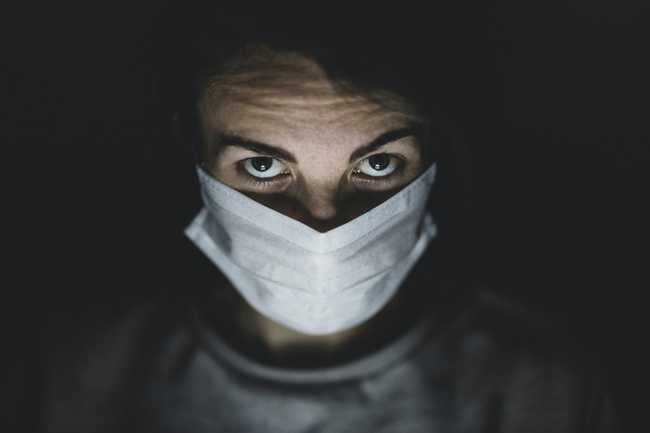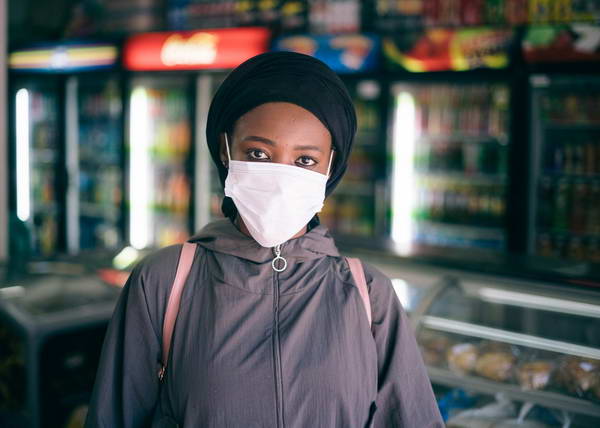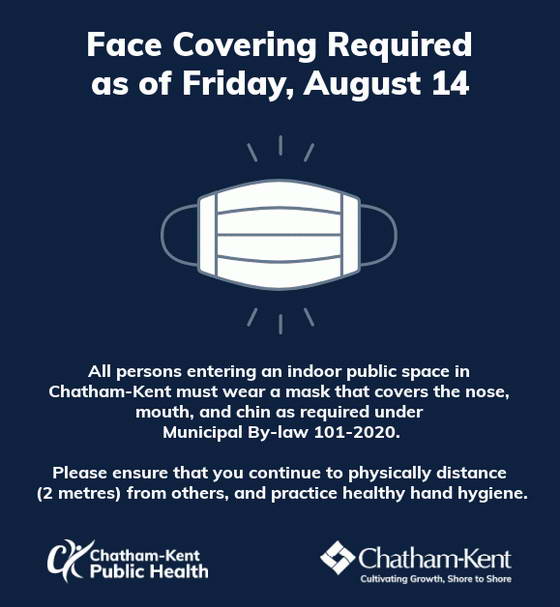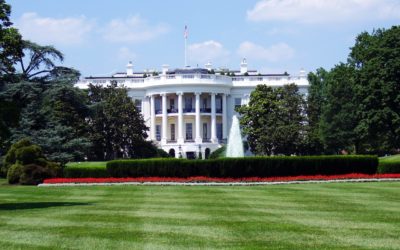Chatham-Kent and the Dreaded Mask
Masks have come to Chatham-Kent. No matter what else, the Covid-19 Pandemic of 2020 has brought the way people think and see the world out into the open. With a combination of social media, ignorance, fear, and general distrust, North American society is going through the wringer of false hopes, misunderstanding and intentions, both good and bad. Across Canada and the US, provinces, and states have been largely left to set their own policies for keeping their citizens safe. Canadian provinces seem to be going even further than the American States while delegating significant control down to the municipal level.
This turmoil is no more evident than in the great mask-wearing debate that is finally sweeping Chatham-Kent. On Monday, August 10, 2020, the Chatham-Kent Council voted to make masks mandatory, with certain exceptions, in enclosed public spaces. Chatham-Kent is one of the last municipalities to enact an order such as this, and it comes on the heels of the area being the leader for new Covid-19 cases in Ontario over the past week.
This public debate is raging on social media, which is probably the worst place it can rage. This is exposing a few ugly truths about our neighbors and our community. Many do not seem to understand how the scientific process works. Others have an overdeveloped sense of their own immunity and self-importance. And some, it seems, just like to be dicks. That this is happening is not surprising with the near-vacuum created by the abdication of leadership in senior government circles and the inability for our local leaders to form a coherent response that is not tone-deaf to the larger issues.
Science and the Virus
Science, at its heart, is a quest for knowledge. As natural processes are examined, science generates information that often enters into the public realm as “facts.” What one scientist says today, if it makes sense or backs up a social belief or desire, tends to get ingrained at both a societal and personal level as “fact.” The reality is that an awful lot of science is not “fact”. It is a theory. A theory may be made up of smaller theories that we think of as facts, but an awful lot of science is based on the interpretation of current data and how they fit the best model for any given observation. This means, science is changeable, and honestly, susceptible to cultural bias, too. It was once fact that the Earth was the centre of the Universe. It was also once a fact that people with dark skin were less intelligent and more savage than their white counterparts. It was a fact disease could be cured by balancing the four humors of the body.
One of the tenets of science is that for a theory to be accepted, it has to be repeatable by other scientists. This is where peer review enters the mix. Research assumptions, methods and results need to be put out into public forums for other scientists to examine, question and argue about. With modern advances in communication technology, review can come quicker and with a greater amount of scrutiny. This leads to the modification of theories over time, a process which in our modern age, can be rapid. Time is an important factor in the life of any theory. The longer a theory exists, the more it can be tested, refined or even rejected. Eventually, it may give enough confidence to be considered “fact”.
At the outset of the Covid-19 outbreak, scientists were studying the virus and often building theories based on their limited incoming data and the behavior of similar viruses they were more familiar with. Researchers were asked to make recommendations to governments and with incomplete analysis at their fingertips. As Covid-19 spread across the globe, new data emerged as more experiments were performed and results were checked and released to the public. Due to compressed time frames, many of these results were not yet peer reviewed and some were based on not fully understood or incomplete data.
It is no wonder that some of the recommendations and predictions have changed. As the world brought its biological science forces to bear on this problem, their best guess, their best strategy, and their best theories changed. This is the scientific process being played out on a public stage across the world without the luxury of time. For a person to claim that they will not wear a mask now because a doctor or researcher said they were not helpful months ago is to be ignorant of the entire process. Health ministries for countries all around the world are in general agreement about masks. Canada, Britain, Australia, the USA and the international WHO all support roughly the same idea: people should wear masks when they are not able to socially distance. Which is, almost by definition, within most enclosed public spaces.
Viruses are tiny, and they are not sentient, nor are they mobile on their own. For a tiny virus to get from one person to another, it is dependent on replicating itself into massive numbers and then attaching itself to some sort of carrier which can move it from place to place. A virus needs to get its genetic code out of one living thing and into another. For humans, that means that an opportunity exists to prevent the virus from infecting a new host. A person does not actually have to stop the virus itself, just its mode of travel. An opportunity exists through hand washing and general sanitation. A virus that lands on surfaces can be transferred by skin and then enter the human body through contact with areas like the mouth, nose and eyes. Once in, it enters the bloodstream, begins to reproduce and then does what the virus is programmed to do.
The second, but a far more common way for Covid-19 to travel is through the air on little drops of moisture that are expelled each time a human exhales. The amount of droplets increases in concentration through coughing or verbal communication. They then either land on hard surfaces and wait to be picked up before they die, or are inhaled into the respiratory system of a new host. Again, hand washing and sanitation can prevent hard surface transmission. It is the airborne transmission where the real battle takes place.
Airborne transmission of viruses is something that is well researched. Science has shown that in general, the larger droplets don’t go as far as gravity pulls them down. Smaller droplets can ride the air currents better and therefore can travel farther and linger longer. The more enclosed the space the higher the potential concentrations of virus. Ventilation quality is not always a help, as in some cases the air currents actually help distribute the virus over a larger area. The specific role of virus distribution played by HVAC systems is still not fully understood. This is one of the reasons why keeping the virus out of the air in the first place is a best-practice strategy. Early research suggests that infection rate and severity depends on the viral load a person receives. Less airborne virus will affect the overall viral density in a given volume of air. Less virus means a greater chance of remaining free of infection or, at least a greater chance that any infection will not be as severe.
If only we could develop a barrier that would reduce or even eliminate those virus filled droplets of water.
A Failure to Lead
Enter the new bane to our existence–the mask. Most people who mask up these days tend to wear anything from a bandana to a surgical mask. With such a large variety, people have asked the legitimate question of “do they work or not?” In a study performed recently, 14 different masks were tested in a controlled, repeatable experiment to count aerosol droplets. The study clearly states its method, it states its assumptions, and it states its limitations, one of which is that the researchers claim to be one of the first of a few who have looked into this issue and suggest others should repeat their experiments.
This study did demonstrate that nearly every type of mask provides some level of aerosol blockage. This means that every type of mask traps at least some of the virus, which would reduce the airborne viral load. This is about as close to “fact” as you can get. One interesting finding of the study, though, was in regard to fleece masks. These appear to do more harm than good as the fleece material seems to fracture larger bits of moisture into smaller ones. The overall effect is a reduction in the total amount of moisture exhaled, but at a cost of creating a higher number of droplets in the air. While it does reduce the volume of droplets, it seems to increase the quantity of those droplets put into the air. The results are incredibly clear. A variety of materials and masks reduce droplets (except for fleece) which reduces the potential volume of virus.
A large part of the challenge in Chatham-Kent comes directly from the Medical Officer of Health and by extension the Public Health Unit. Dr. Colby, perhaps unwittingly, has provided fodder for the anti-science and anti-mask crowd by framing the discussion around the fact that some people choose to use masks that are not as effective as others. This is a valid point, but it misses the mark.
His role, as defined by Chatham-Kent Public Health, “has the legislated responsibility to protect the health and well being of individuals and the community…” He is required to do this by providing policy and advice that is backed up by science, but this also needs to be done through the lens of protecting people’s health. In published interviews he has referred to mask wearing as “chicken soup”, and has stated that studies on mask wearing are “all over the map”. He has made statements that if masks are not medical grade they will only “catch large expectorated secretions”. None of these statements are factually wrong, but in the contexts they are used, they provide a grey area for dissent and “alternative facts” to take hold. And it is these beliefs that actually hinder his and Public Health’s role in protecting people’s health.
In public policy, at some point, someone has to take the lead. Because of the lackluster and mixed messages being sent by Dr Colby, the anti-mask movement has been able to gain ground. In an interview with Mark Malone from the Chatham Daily News Dr. Colby states, ““There’s excellent evidence that medical-grade masks are very effective…” In that same interview Dr Colby says, “The advice that I’ve been giving from the get-go is that, if you can’t physically distance, wear a mask.” This is the message that should have been front and center, not hair splitting on types of mask and references to Chicken Soup.
This is important for that fact that one of the significant roles Public Health plays is through education of the public in best practices. This education should be delivered through carefully crafted communication that is engaging, consistent and sound. Social distancing is, by far, the most effective strategy for prevention of the spread of the virus. On that point, Dr. Colby and Chatham-Kent Public Health have never wavered. But, like science itself, the situation on the ground has evolved. Our communities have been going through “phases” with each successive one representing more of our society being opened again. A side effect of this is to bring more people into closer contact with each other. Restaurants, bars, and shops have reopened and, indeed, need to be open to survive. However, by their very nature, patronizing places like this brings people into realms where social distancing is harder and the potential for exposure goes up.
While the timing of when a community would be able to enter a new phase was unknown, the fact that communities would gradually open back up was never a question. The provincial government of Ontario produced lists of what could be opened for each new phase. It was clear that social distancing would become a larger challenge as time went on. Summer was coming, social establish would eventually open and people will naturally tire of the isolation. Instead of Public Health getting ahead of the curve and very vocally, clearly and loudly talking about masks (their types and their relative effectiveness), we now find Chatham-Kent with one of the worst provincial new infection rates and a very vocal anti-mask crowd.
The science never said that masks do not make a difference. Had a focused and compelling education campaign taken place, perhaps mask wearing wouldn’t have become so political. Perhaps it wouldn’t be mandatory because, as a whole, the community was pretty much already doing it. Perhaps it wouldn’t be an issue because the science denying anti-mask crowd would already have been quieted by the effective education on reasonable options by the people put in charge of protecting citizen health.
Physical distancing is the best way to control the spread of Covid-19. Physical distancing is also a lot easier to achieve when the weather is conducive to staying home and most social gathering places are closed. Our local businesses have to be open, too. There needs to be balance. The message had to change, it had to evolve, and it didn’t. Because of this, the municipal council had to make a political decision which will only perpetuate anti-science myths and give license to those who want to find or be the exception to every rule. Now there is a mask bylaw and no real education around masks. People are left to find their own information, and they will accept or reject information that confirms their own biases as they do so. The people who are paid to lead need to start getting in front of the potential outcomes that are not hard to predict and start being proactive. Leading the general public takes buy in. This happens through engaging, consistent, educational and reasonable messaging. That messaging has to be easy to access and it has to have time to work.
It’s time for Dr. Colby to stop being the guy in the background, who revels in the scientific process of uncertainty while splitting hairs in public. It is time for public health to get in front of issues and be visible with compelling and engaging ways to promote the best practices that have the best chance to keep us healthy as a community. It is time for our municipal bureaucracy to tap into the talent that exists in our community and empower them to produce vibrant and engaging media which educates and points everyone in a safe direction. There will almost always be outliers and exceptions to any research. But when a preponderance of the evidence says one thing, and the health organizations globally all start saying essentially the same thing, it’s time for our local experts to stop trying to show how smart and scienc-y they are, and start promoting policy that protects the public.









Extremely well said!
Tom,your story is filled with untold truths BS & lies
How so? Could you explain your statement with facts on what are ‘untold truths, BS and lies’?
Excellent and well-reasoned article!
Except the increased infection rate in CK is due to people not staying within their “social bubbles”…it is misleading to imply the increased rate of infection is caused by people not wearing masks. Most of the outbreaks have been caused at workplaces or gatherings where people are in close contact with each other.
And if those people in those workplaces or large gatherings had been wearing masks….maybe none of those transitions would have occurred. Simple science.
This article seems to be all one sided and against Dr. Colby with his medical background. This article is fear mongering. We need to find someone to write about the other side of things and how our numbers have remained low and social distancing works. There was never an outbreak in Walmart or a grocery store here. Its all been close family contact.
Sorry but you listed no sources for evidence of your claims. In fact there are clinical studies that have been done that show no significant difference between a mask and no mask when it comes to a virus. Your THEORY has several flaws, how do you explain that numbers across the province continued to get lower and lower long before masks, even with restrictions getting fewer and fewer? The majority of Ck’s cases have been at the Greenhouse or related to it, or Low German speaking community. What was the source of those? How do medical staff still get the virus when they wear the N95 mask or when they wear both a mask and a shield. And lets take into consideration the actual numbers, and for the record numbers can be manipulated like they were when it was reported CK had the highest numbers in the province for a week , but failed to mention it was due to an outbreak in a small but close community? Low German community. It also said it was out of a per capita basis of 100k , so in fact we didnt have the highest for the province, they had to manipulate the numbers to prove the point they wanted. To date Ck has had only 359 cases, and out of that only 4 hospitalisations, and out of that only 2 deaths, which btw had major medical issues prior to becoming positive. See for yourself https://ckphu.com/current-situation-in-chatham-kent/